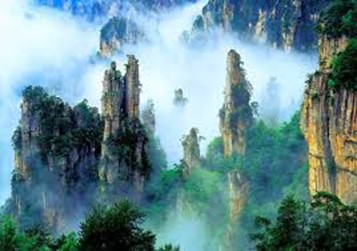Natural and cultural heritage are both things that are inherited and passed down from previous generations. They can take many forms, including physical artifacts, landscapes, and societal traits:
Natural Heritage



Includes the natural resources and biodiversity that make up landscapes, such as geology, soils, landforms, flora, fauna, and ecosystems. Natural heritage sites can show major stages in Earth’s history, such as fossils and rocks, or contain rare natural formations, like unique rock shapes. They can also be areas that are very beautiful or have habitats and species of animals and plants that can only exist there.
Cultural Heritage


Includes physical artifacts of human history, such as buildings, monuments, landscapes, archive materials, books, works of art, and artifacts. It also includes intangible culture, such as folklore, traditions, language, and knowledge. Cultural heritage sites can be places where humans settled and used the land in a way that represents their culture. Cultural heritage objects are symbolic and represent identities in terms of culture and natural surroundings. Connection to and traditional activities around these objects create a sense of community.
